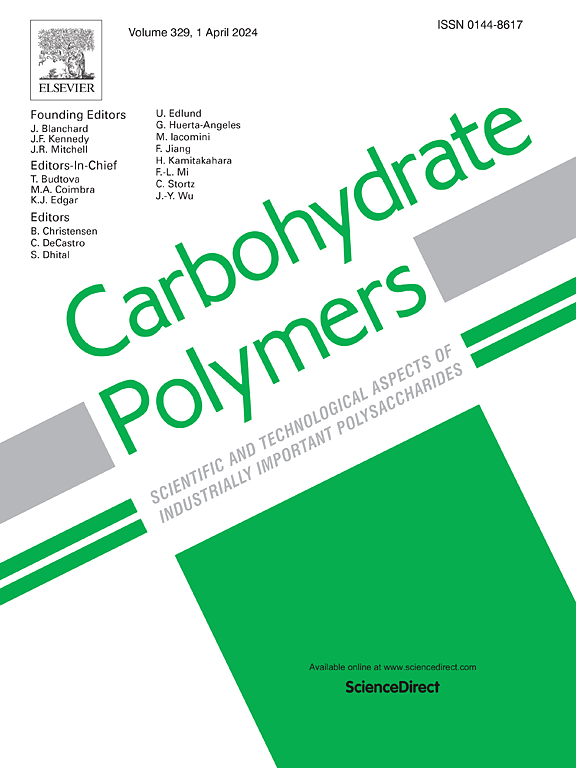Taro leaf inspired micro/nanocellulose-based hierarchical structural coating and its application on O/W separation and food preservation
IF 10.7
1区 化学
Q1 CHEMISTRY, APPLIED
引用次数: 0
Abstract
The water-repellent and antibacterial capabilities are essential criteria for textile and packaging materials. This research creates a non-fluorinated, superhydrophobic coating inspired by the hierarchical structure of the Taro leaf, utilizing an emulsion of alkyl ketene dimer (AKD, as secondary roughness) encapsulated within cellulose nanofibres (CNFs), assembling with cellulose microparticles (CMPs, as primary roughness) and TiO2 nanoparticles (as tertiary roughness). The post-recrystallization of AKD plays a vital role in the formation of multi-level surface roughness. Attributing to the driving force generated by water evaporation, the orientation of recrystallized AKD can be regulated either parallel or perpendicular to the substrate. The coated paper exhibited a water contact angle (WCA) of 166.7 ± 3.2° on unsized paper and up to 173 ± 2.0° on filter paper. Cooling temperature and cooling rate play a crucial role on the formation of uniform and stable platelet structures according to the morphology analysis of AKD's recrystallization. Due to the strong superhydrophobicity and the incorporation of TiO2 nanoparticles, the coating possesses self-cleaning and anti-fungal qualities, successfully preventing tomatoes from rotting. In short, this research presents a sustainable approach for the production of aqueous-phase coatings, with potential applications in waterproof surfaces and food packaging.
求助全文
约1分钟内获得全文
求助全文
来源期刊

Carbohydrate Polymers
化学-高分子科学
CiteScore
22.40
自引率
8.00%
发文量
1286
审稿时长
47 days
期刊介绍:
Carbohydrate Polymers stands as a prominent journal in the glycoscience field, dedicated to exploring and harnessing the potential of polysaccharides with applications spanning bioenergy, bioplastics, biomaterials, biorefining, chemistry, drug delivery, food, health, nanotechnology, packaging, paper, pharmaceuticals, medicine, oil recovery, textiles, tissue engineering, wood, and various aspects of glycoscience.
The journal emphasizes the central role of well-characterized carbohydrate polymers, highlighting their significance as the primary focus rather than a peripheral topic. Each paper must prominently feature at least one named carbohydrate polymer, evident in both citation and title, with a commitment to innovative research that advances scientific knowledge.
 求助内容:
求助内容: 应助结果提醒方式:
应助结果提醒方式:


